Today’s post is a mix of pictures taken over the past couple of weeks; no particular theme, just some images of winter. The first two were taken from our back deck, featuring the mountain scenery we see behind our home. They were taken about 1-1/2 hours apart in the late afternoon beginning with this one at around 3:oo PM. The suns has not yet officially set but we’ve lost sight of it behind the mountains, backlit in this picture. The clouds are an interesting form of altocumulus, a middle-altitude cloud type, characterized by globular masses or rolls in layers or patches. Altocumulus generally forms about 6,500 feet to 20,000 feet (2,000 to 6,100 meters) above ground level and this particular form is sometimes referred to as altocumulus mackerel sky.
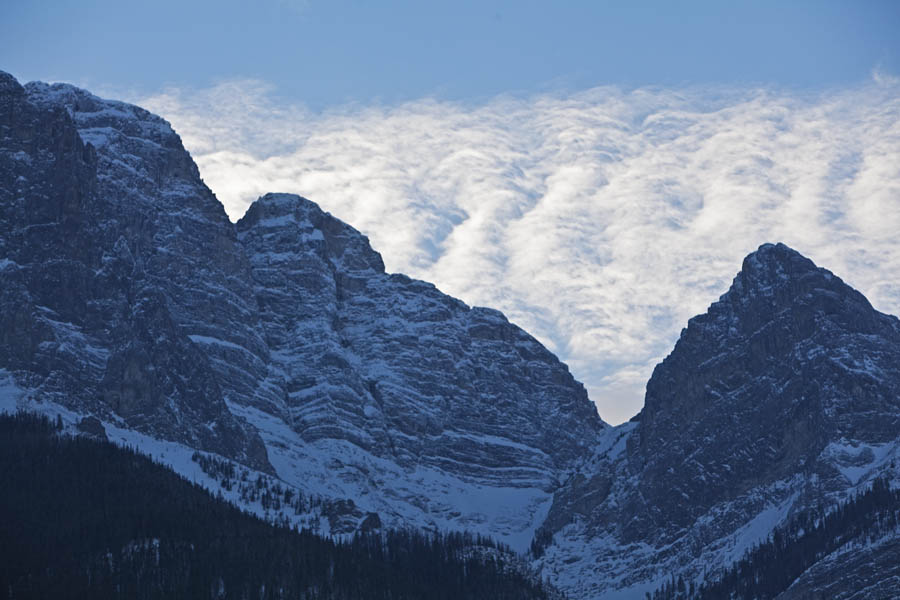
Just before sunset at approximately 4:30 pm, the cloud form had changed. They now have the wispier, layered look of stratus clouds and I believe these would be classified as altostratus, having evolved from the earlier altocumulus clouds. Any evidence of convection, associated with cumulus clouds has disappeared.
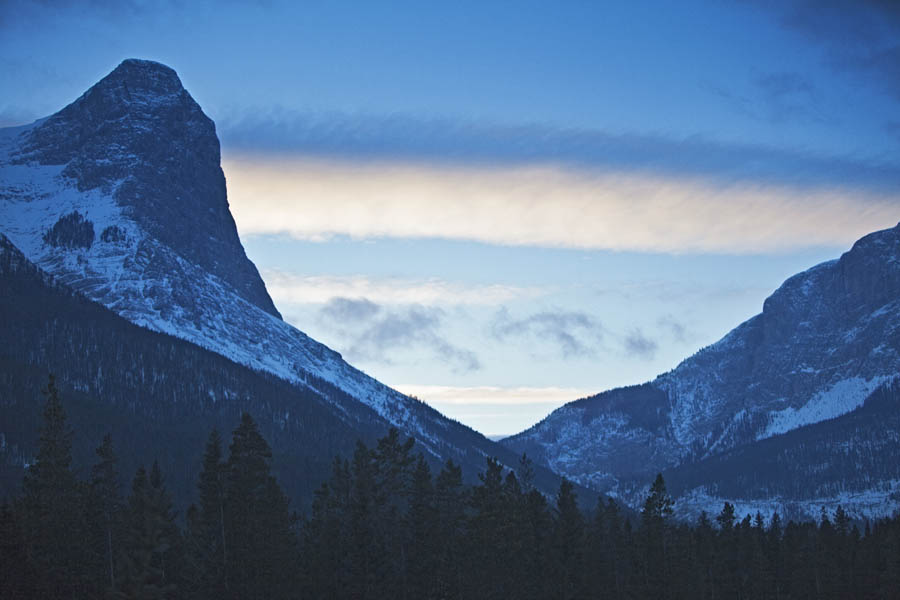
Enough with the clouds. Now a couple of river bed shots, taken at Castle Junction on the Bow River. This first picture has some interesting patterns and textures. Of particular note is the hoar frost that has formed on top of the ice and on some of the stones in the river.
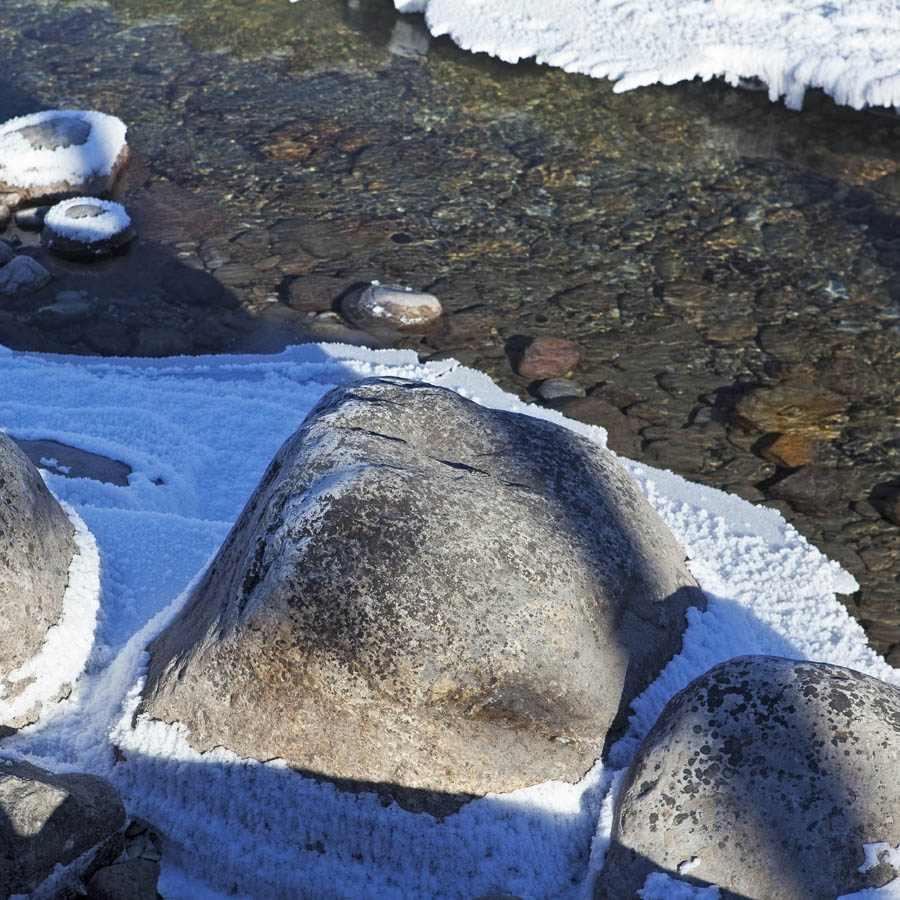
A little downstream, I captured this shot of a small, yet unfrozen stream bubbling into the river from a frozen creek that feeds the Bow. This picture was taken with a large aperture, f2.8 and you can see it has a very shallow depth of focus. Only the stream itself and the ice edge on its upper side are in focus.
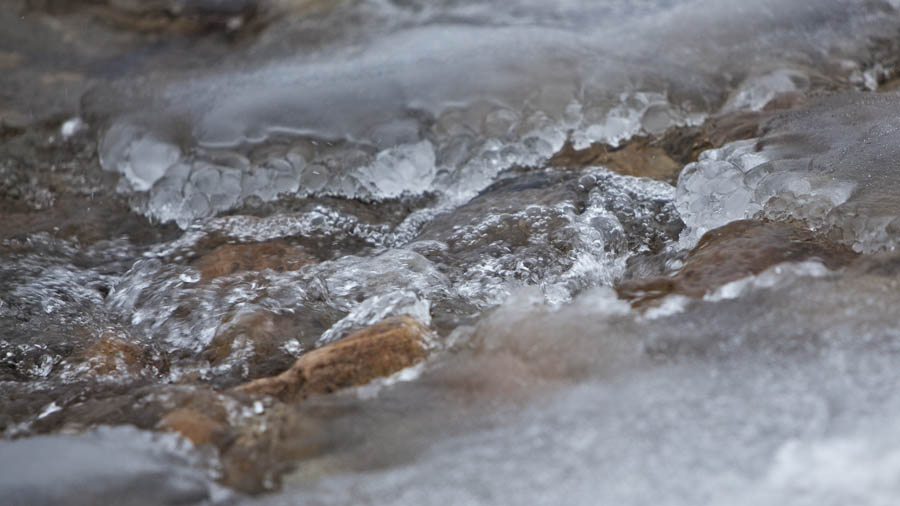
The next pair of pictures are from a morning spent dog-sledding in the Spray Lakes area. In this first picture, taken from my seat in the sled you see the dogs eagerly waiting to re-start. We’re parked behind a number of sleds due to a small conflict between dogs in a team further up.
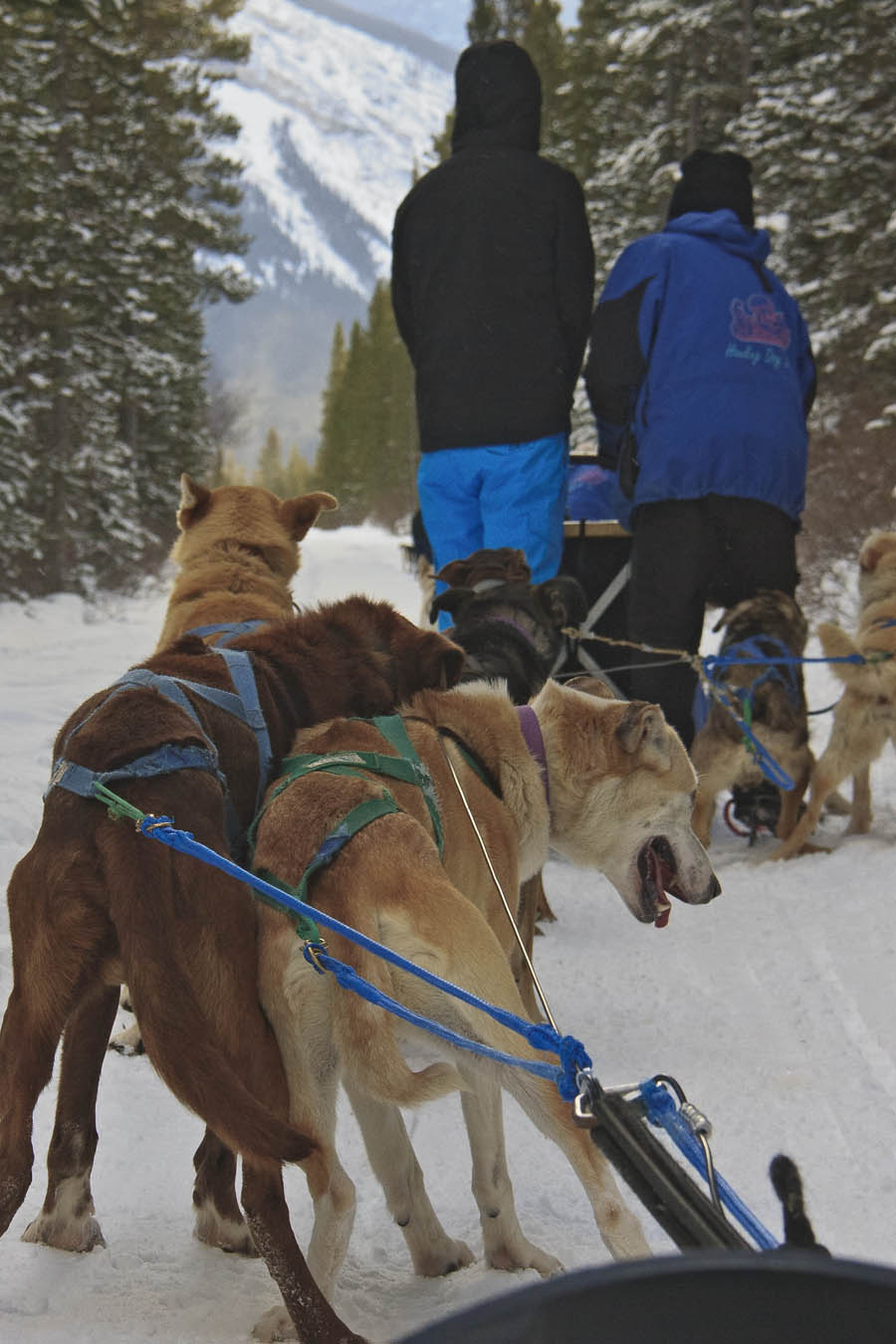
The dogs used by the sledding company are Siberian Huskies and Alaskan Huskies. The latter are, interestingly a mixed breed. The Alaskan Husky falls short of being a pure breed in that there is no preferred type and no restriction as to ancestry; it is defined only by its purpose, which is that of a highly efficient sled dog. Specializations in type exist within the category, such as freighting dogs (Mackenzie River Husky, Malamute), sprint Alaskans (Eurohound), and distance Alaskans. The Alaskans used by Howling Dog Tours, fall in the category of sprint Alaskans and are a cross between Siberians and Greyhounds. The dogs in the picture below are pure Siberian Huskies.
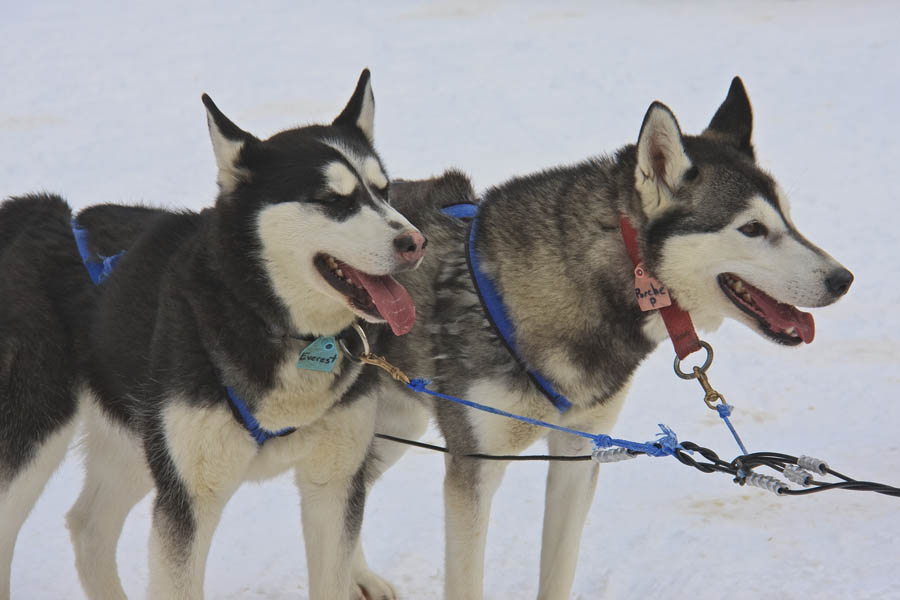
My final three pictures for today were taken at a favourite location, the Sawback Burn which takes on an entirely different look in winter. As I’ve explained in previous blog posts, this area is the site of a controlled forest fire, designed to reduce the amount of underbrush (the amount of incendiary material) and help avoid larger, uncontrolled fires. It’s a vast area of deadfall which creates patterns interesting to photographers. The mantle of white is an added feature that makes this area appealing in winter.
I begin with a relatively wide angle scene that provides the big picture view of the area.
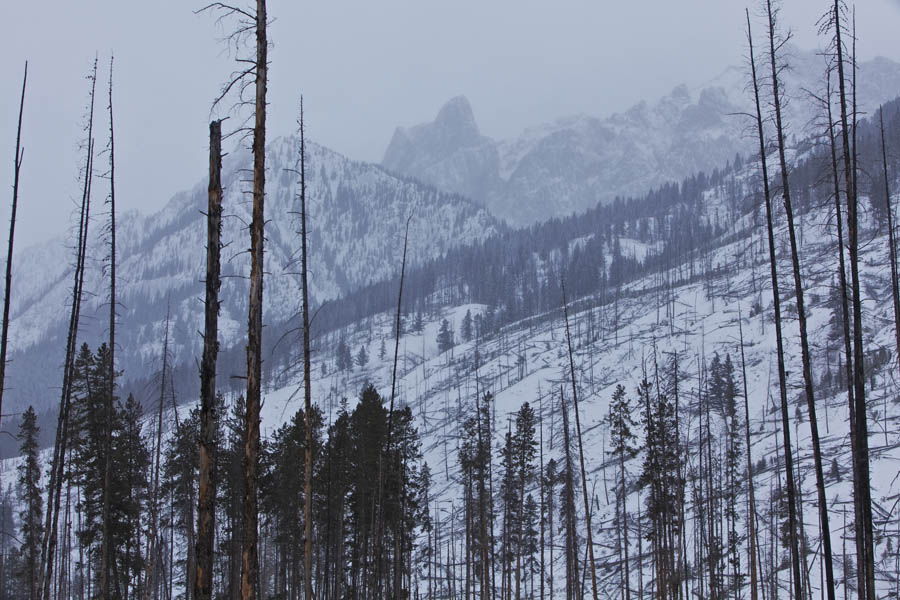
Followed by more of a close-up that shows the maze of logs on the ground,
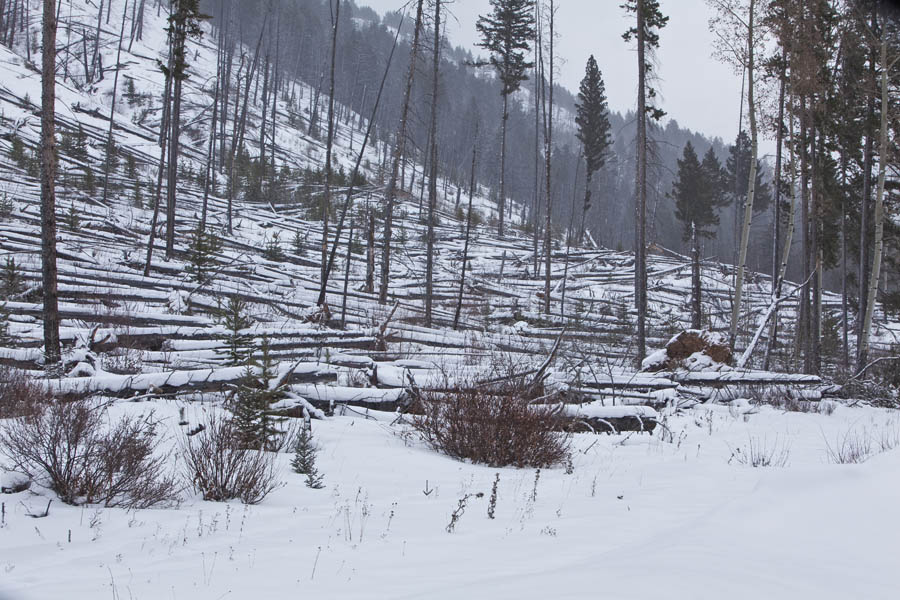
And finally, a solitary, snow-coated log whose appearance appealed to me.
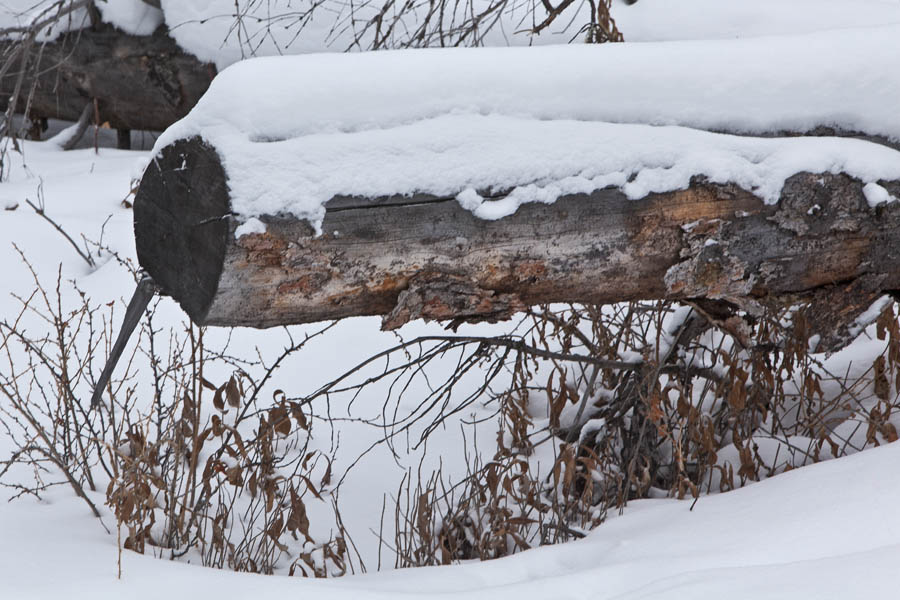
I truly enjoy winter photography and look forward to a few more outings before the season ends.
